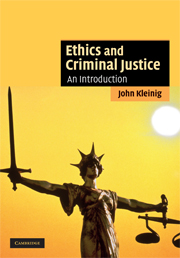Book contents
10 - Juries: the lamp of liberty?
Published online by Cambridge University Press: 05 June 2012
Summary
No tyrant could afford to leave a subject's freedom in the hands of twelve of his countrymen. So that trial by jury is more than an instrument of justice … it is the lamp that shows that freedom lives.
The jury is an ancient institution. It was, after all, a jury that in 399 BCE (by a vote of 281 out of 501) sentenced Socrates to death for corrupting the youth of Athens. But even the “modern” jury pre-dates the emergence of the liberal democratic societies with which we now associate it. After the Norman invasion of England in 1066 CE, a system of grand and petit juries that Charlemagne had developed in eighth-century France was introduced to Britain. In 1215, the English Magna Carta – a formative document for democratic polities – provided for jury trials by peers, and it was about that time that the determination of guilt became the jury's primary role. In early juries, jurors were usually familiar with defendants; it was not till relatively recent times that such familiarity would serve to disqualify a person from participation. By the time of the American Revolution, the jury had arrived at pretty much its present form – though, as the revolutionaries complained, jury trials were frequently corrupted or circumvented by those in power. After the New World colonists broke from the distant and centralized power of England, the “American experiment” accorded to jury trial a much greater symbolic and practical role than was found in its countries of origin.
- Type
- Chapter
- Information
- Ethics and Criminal JusticeAn Introduction, pp. 175 - 192Publisher: Cambridge University PressPrint publication year: 2008



